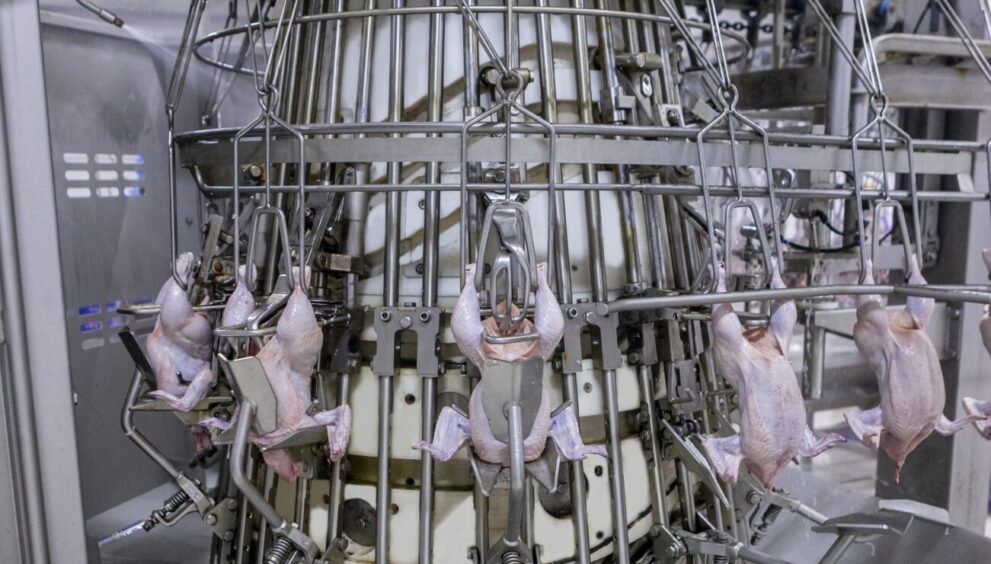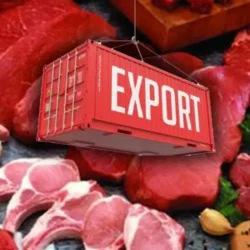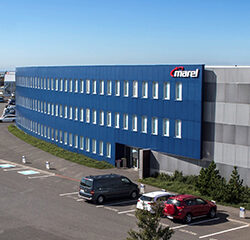For many poultry processors, the difficulty today is finding good labor. Filling all jobs in the plant is becoming a huge challenge. Processors might be considering moving to more automation and becoming less dependent on labor, particularly if the process is largely manual but the need is there for a capacity increase. If so, Marel Poultry can support every entrepreneur in the poultry industry, providing all available advice and solutions.
Marel’s Compact Grader can be seen as the first automated step in the process after chilling. It grades whole grillers as well as cut pieces.
When there’s a shortage of skilled manual labor, investing in automation is crucial. When the processing plant grows in capacity, the processes will need to become more industrial and less dependent on labor. When looking for support to tackle these issues, processors will find Marel Poultry at their side, ready to supply the appropriate systems and software, as well as the necessary customer service.
Having the CoreTech in operation (visible in the background), eventually manual giblet harvesting can be automated too.
First steps
No matter the capacity, each processor can opt for the level of automation which fits best. At every stage in the process, various solutions are available.
Usually, the very first steps in automated processing involve scalding and plucking with products shackled to an overhead conveyor. Further steps to reduce the number of operators could involve the evisceration process, semi-automated giblet harvesting, product grading and cut-up.
A counterflow screw chiller increases shelf life
Growing with the capacity
Of all the manual operations, it’s most likely to automate evisceration. It’s a logical step to progress from manual knives to the Marel Nuova CoreTech automatic eviscerator. This carrousel machine can grow with the increasing capacity. Automatic transfer of the drawn pack to its own pack shackle can easily be added and the same goes for automatic giblet harvesting. Such important upgrades will be possible without having to invest in completely new machines.
All other operations in the evisceration department from vent cutting and vent opening to neck processing and final inspection can be gradually automated too.
Counterflow water chilling
Once products have been eviscerated, they must be chilled. In the initial automation phase of a processing plant, they will be chilled by water in a counterflow screw chiller. This guarantees a longer shelf life. Products have to be unloaded from the overhead conveyor to be immersed in the chilled water. They are conveyed by screw into ever colder and cleaner ice water or flake ice water. The water in the system flows in the opposite direction and it is agitated by introducing air, whose volume can be adjusted to give the level of water pick-up required. Auger chillers are modular and can be extended easily. After the chilling process, a drip drum can be applied to remove access water.
A mix of modules
Once chilled, products must be graded, weighed and packed. Starting from manual work stations equipped with scales and bagging aids, processors will graduate through belt graders, such as the Compact Grader, to a dedicated selection and distribution line.
Some products will be cut into portions. The cut-up and deboning departments also need a lot of human attention if they aren’t automated. Plenty of options are available for turning these processes into in-line automatic operations without losing yield or compromising product quality or presentation. The Marel ACM-NT Compact cut-up system is an excellent solution to cutting all the products required by customers. Thanks to its modular configuration, the available wing, leg and breast cutting modules, which meet all standards for skilled manual cuts, can be engaged or disengaged. By putting together a customized mix of ACM-NT cutting modules, it’s even possible to satisfy cutting requirements specific to a particular region.
The right level of automation
In the filleting department, Marel’s AMF-i intelligent breast cap deboning system offers just the right level of automation for harvesting breast fillets and tenderloins. To perform total leg deboning, the Thigh Fillet and the Drumstick Deboning Systems work closely together to produce deboned poultry leg meat fully automatically with no need for any manual input, another opportunity to make considerable labor savings.
Weighing, grading, batching, packing and labeling are also manual operations that can be turned into automated processes.
Keep control
All customers, be they supermarkets, quick service restaurants or wholesalers, demand a wide variety of end products from whole grillers to cut portions, all custom packed. Marel Poultry is a first-rate partner for processors who are looking for ways to respect local and traditional food cultures while combining performance, food safety and sustainability. You’ll be able to keep control of the quality standards your markets and consumers are demanding.




